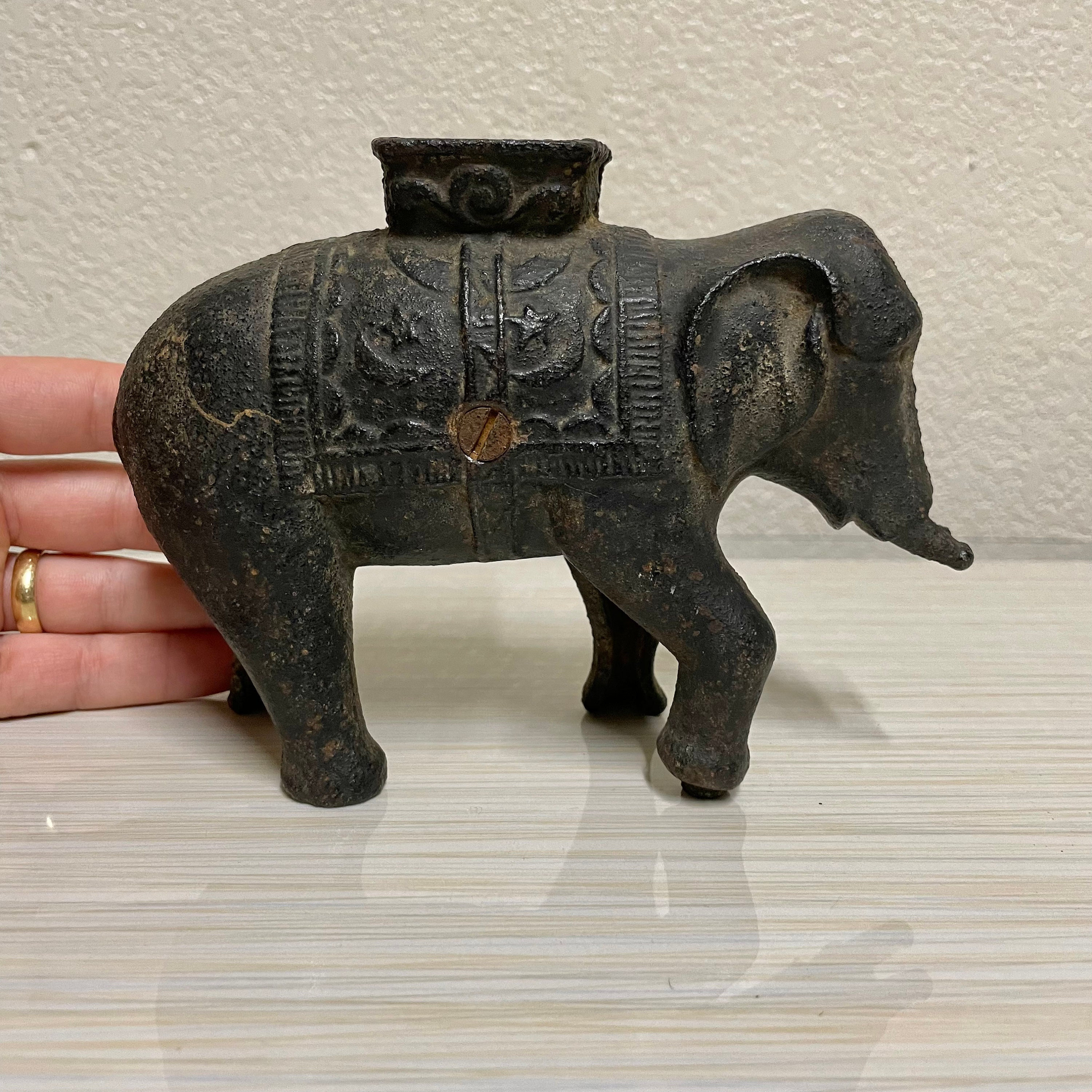The Enduring Appeal of Antique Cast Iron Elephant banks
Cast iron elephant banks, with their charming designs and robust construction, have captivated collectors for generations. These whimsical yet practical objects offer a glimpse into the past, evoking a sense of nostalgia while also representing a fascinating chapter in the history of banking and toy manufacturing. From their humble beginnings as simple receptacles for spare change to their current status as highly sought-after collectibles, antique cast iron elephant banks have proven their enduring appeal.
A Brief History of Cast Iron Banks
The story of cast iron banks begins in the mid-19th century, coinciding with the rise of industrialization and mass production. The ability to produce intricate castings at a relatively low cost led to a surge in the popularity of cast iron for various household items, including toys and banks. These early banks were often figural in nature, depicting animals, characters, and even buildings. Their primary function was, of course, to encourage saving, particularly among children.

The Rise of the Elephant
Among the diverse array of figural cast iron banks, the elephant quickly emerged as a favorite. The elephant’s symbolic associations with wisdom, strength, and good fortune likely contributed to its popularity. Furthermore, the elephant’s large size and distinctive features lent themselves well to the casting process, resulting in banks that were both visually appealing and substantial.
Design Variations and Manufacturers
Antique cast iron elephant banks came in a variety of designs, reflecting the artistic styles and manufacturing techniques of different eras. Some of the earliest examples were relatively simple in form, while later versions became increasingly ornate and detailed. Manufacturers often incorporated intricate patterns, realistic textures, and even moving parts into their designs.

Several prominent foundries produced cast iron banks, including the J. & E. Stevens Company, Hubley Manufacturing Company, and the Kilgore Manufacturing Company. These companies were known for their high-quality castings and innovative designs. Identifying the manufacturer of a particular bank can often be challenging, but certain characteristics, such as the style of the casting, the type of paint used, and any markings or signatures present, can offer clues.
Construction and Mechanisms
Cast iron elephant banks were typically made in two halves, which were then joined together. The casting process involved pouring molten iron into a mold, allowing it to cool and solidify. Once the casting was removed from the mold, it would be cleaned, painted, and assembled.
Many antique cast iron elephant banks feature a slot on the back or top for inserting coins. Some banks also have a mechanism for releasing the coins, often activated by a lever or button. These mechanisms can range from simple to quite complex, adding to the bank’s charm and collectibility.
Collecting Antique Cast Iron Elephant Banks
Collecting antique cast iron elephant banks can be a rewarding hobby. The thrill of the hunt, the satisfaction of finding a rare or desirable piece, and the opportunity to learn about the history and craftsmanship of these objects all contribute to the appeal of collecting.
When starting a collection, it is important to educate yourself about the different types of banks, their manufacturers, and their approximate values. Researching online resources, attending antique shows and auctions, and connecting with other collectors can be invaluable.
Factors Affecting Value
The value of an antique cast iron elephant bank can vary significantly depending on several factors, including its rarity, condition, manufacturer, design, and originality. Rare and highly sought-after examples can fetch thousands of dollars at auction, while more common banks may be more affordable.
The condition of the bank is also a crucial factor. Banks in excellent condition, with their original paint and minimal wear, will generally be worth more than those that have been repainted or have significant damage. Originality is also important; banks that have been repaired or altered may be worth less than those that are entirely original.
Identifying Reproductions
As with any collectible, reproductions of antique cast iron elephant banks exist. These reproductions can be difficult to distinguish from originals, especially for novice collectors. However, there are certain telltale signs that can help identify a reproduction. These may include differences in the casting quality, the type of paint used, and the presence of modern markings or signatures.
Caring for Your Collection
Proper care is essential for preserving the value and beauty of your antique cast iron elephant banks. Avoid exposing the banks to extreme temperatures or humidity, as this can damage the paint and cause the iron to rust. Gently clean the banks with a soft cloth to remove dust and dirt. Avoid using harsh chemicals or abrasive cleaners, as these can scratch the surface.
The Enduring Legacy
Antique cast iron elephant banks represent more than just objects of financial utility or nostalgic charm. They are tangible links to the past, reflecting the ingenuity and artistry of early toy and bank manufacturers. Their enduring popularity among collectors is a testament to their timeless appeal and their enduring legacy as cherished symbols of childhood and saving. Whether you are a seasoned collector or simply appreciate the beauty and history of these objects, antique cast iron elephant banks offer a fascinating glimpse into a bygone era.


